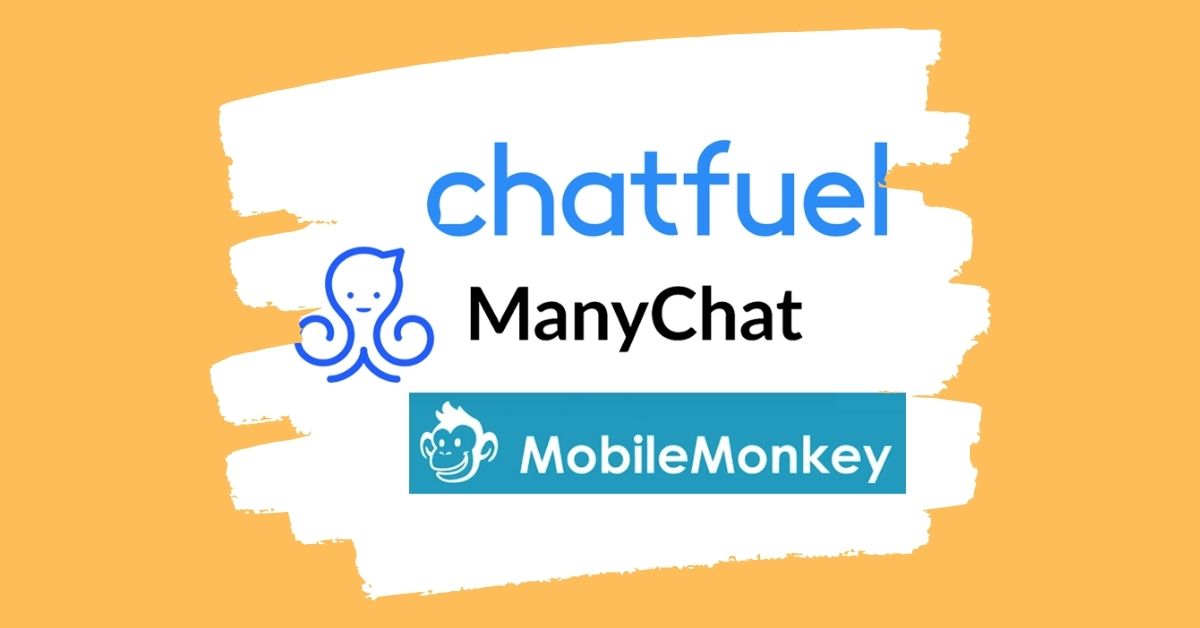Using Chatbot Building Platforms To Build Chatbots

This is part of a series of “Bot Making Tools Assessment” findings from the ‘How To Build A Bot With The Right Kind Of Tools‘ article.
Checkout the rest of the series by following these links:
- Chatbot Building Platforms (this article)
- Facebook Chat API
- Microsoft Bot Builder SDK
- Synthetic Intelligence Markup Language with OSCOVA
My Findings
Currently there are many online tools that allows the developer to build chatbots very quickly (some claims that “you will be able to do it within 5 minutes”). For example, just for the Facebook Messenger alone, there are 69 (and growing) Messenger Platform Development Providers .
Do note that the main aim of Chatbot Building Platforms are to abstract away the technical parts of building a bot, much like how CMS (Content Management Systems) like WordPress & Kentico does to abstract away the technical bits of HTML and CSS.
I picked ManyChat, Chatfuel & MobileMonkey (and tried it in that specific order as well) and it certainly was the best way to learn some of the basics of bot development, in terms of understanding the type of bot components available. Chatbot Building Platforms usually play to the strength of certain parts of bot building / feature set.
- ManyChat is more focused on broadcasting, so their analytics and tracking features are pretty good. Building conversational flows is a little bit difficult because their builder UI is more geared towards broadcasting messages.
- Chatfuel is a pretty good middle ground that caters for the possibility of integrations and have a much better bot building interface, however it still takes a few days to get acquainted to “how everything works” by going through samples and videos or checkout this Udemy course.
- MobileMonkey runs a really good blog focusing on using Chatbots for Marketing. So whenever you want to explore other areas (not just the “wiring-up-your-content-to-the-bot” kind), their resources are very useful for ideation.
Casual users will appreciate that they have “pre-built” templates get started quickly. When moving on to something a little more advanced, Chatfuel has “extensible” components / functionalities for integrations with third party systems. For example, to send data to another system, the developer must have some knowledge of using JSON APIs of that other system. This will be quite a common scenario as many small businesses use a multitude of online services (e.g. online storage, email marketing, information APIs) instead of having everything “under one roof”.
As for Artificial Intelligence, it is usually an option to be “turned on” explicitly. In other platforms, it could be part of the features in the bot itself with no further setups from the end user. Taking Chatfuel as an example, they have both their own AI and supports integration with third party AI – DialogFlow (formerly known as API.ai).
Another good thing about these platforms is that they have quite an active community base. Both casual users and developers can easily find solutions on how to configure the bot for certain scenarios and get inspired by other creative ways to build bots.
Note that these platforms are hosted services. They do provide both “Free” and “Paid” tiers, removing certain limits such as watermarking & number of bots the user can build & host. It is also entirely up to the platform provider to ensure the quality of service and support. Data is not as easily accessible, especially in cases for businesses in certain countries / domain that have issues with data being hosted “on a remote server that they do not own” or security reasons of “data not being in isolated data store”.
Suggested Use Cases:
- Simple marketing and customer facing interactions such as lead generation, customer service & e-Commerce (simple followups), news broadcasting.
Source:
